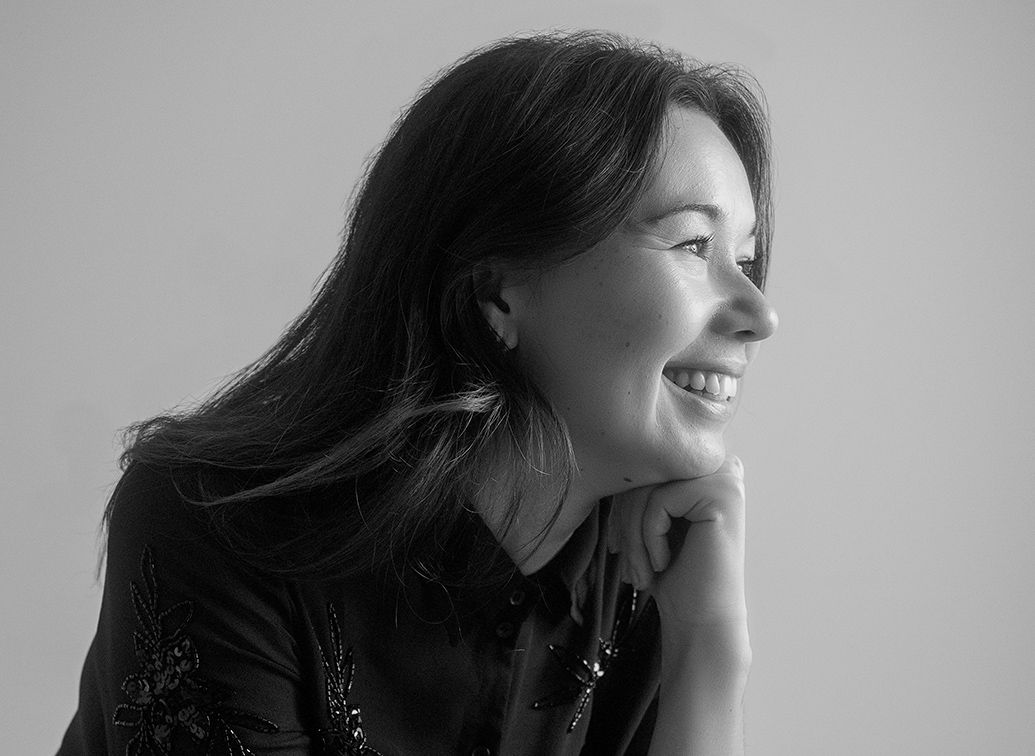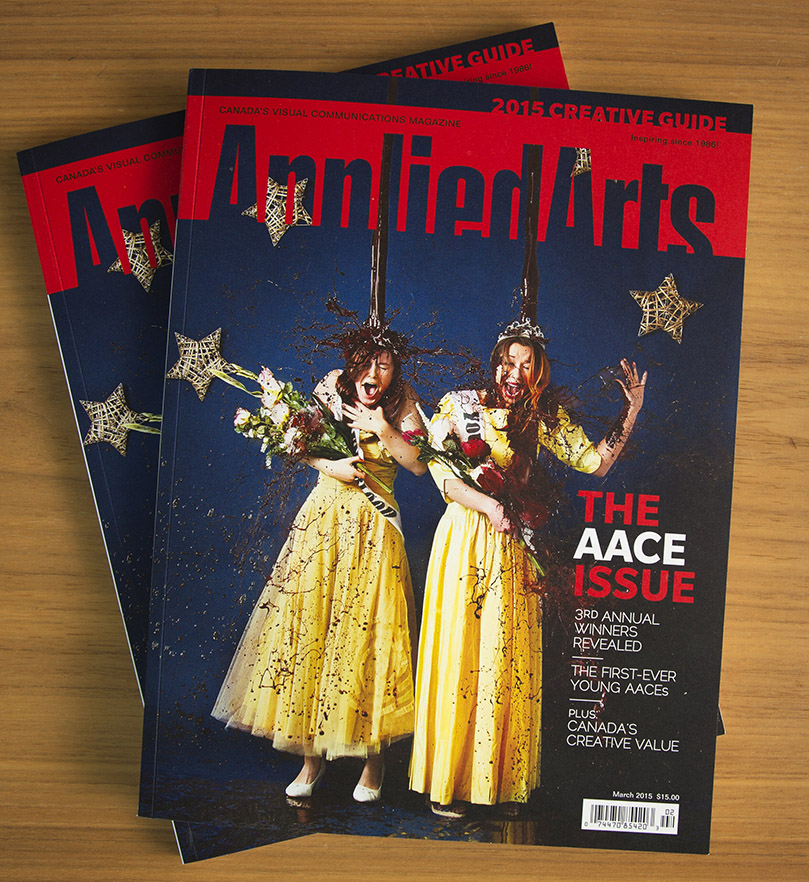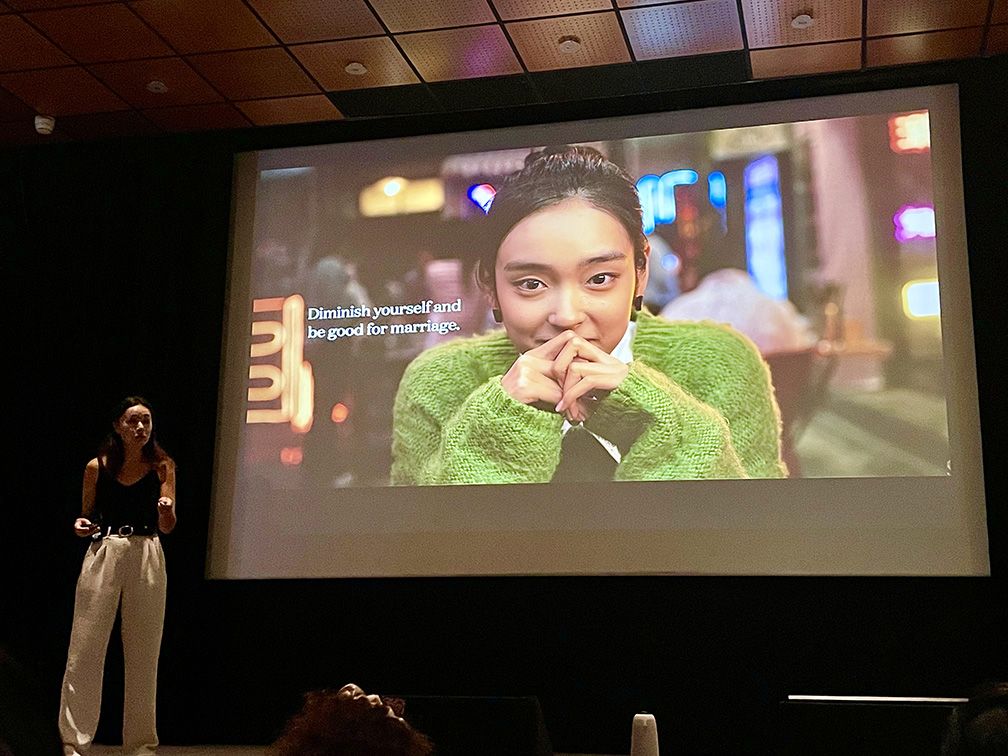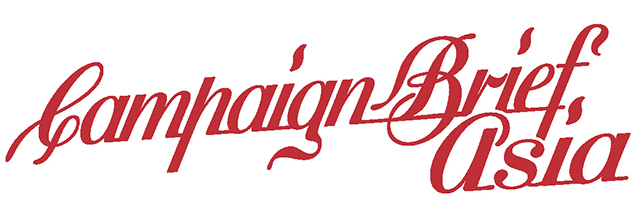#1 Ranked Creative in Singapore, Rachel Kennedy’s journey from fake blood to Cannes Juries

In the most recent Campaign Brief Asia Creative Rankings, Forsman & Bodenfors Group Creative Director Rachel Kennedy rose to the top as the #1 Most Awarded Creative in Singapore. She also ranks as the #14 Most Awarded Woman in Asia. Her impressive standing is the result of multiple accolades earned over the past two years at major shows including Cannes Lions, The One Show, Clio Awards, AWARD Awards, Mad Stars, New York Festivals, Spikes Asia, and AdFest. Kennedy’s reputation in Singapore’s creative industry continues to grow—this year alone, she has been invited to judge at the Dubai Lynx and the Creative Review Annual Awards, and will sit on the Direct jury at Cannes Lions next week. Campaign Brief Asia sat down with Kennedy to find out more about her journey.
Kennedy began her creative career in Canada 13 years ago, later moving to Amsterdam, and then relocating to Singapore four years ago to join Forsman & Bodenfors.
Her recognitions include being one of just 15 women globally selected for Cannes Lions’ See It Be It 2019, which highlights prominent female leaders in the industry. She is also a Cannes Lions Creative Academy alumna, a Young Lions Netherlands winner, a Young Blood winner, and was named one of Canada’s Top 10 Art Directors. Most recently, she was awarded Creative Director of the Year by the Association of Advertising & Marketing Singapore (AAMS) in 2023.
Kennedy created Canada’s most awarded social campaign and Singapore’s top-performing campaign at Cannes Lions 2023. She has spoken at the Epica Awards, Cannes Lions, and The Art Directors Club; exhibited work in the Canadian Museum of History; been featured in The New York Times; and even tweeted about by Kim Kardashian.
CB Asia: Rachel tell us about your career starting in Canada. What made you choose Advertising?
I stumbled into advertising by accident. I worked on a community program that allowed me to travel around Canada a volunteer with charities and community services. I found myself working at the Town Hall in a city of 9,000, helping to promote community events, tasked to design posters for the local wine festival. Somewhere between Photoshopping cats with wine bottles and pasting up flyers, I realized: there’s this thing called advertising? It’s a loophole. A passport. A way to live everywhere and do something wildly creative while you’re at it. Eventually, I studied it formally at university in Toronto.
My first internship? Total chaos. My creative partner Shauna Roe and I realized that an all-female team was rare at the time, so we called ourselves ‘The Ballsy Interns’. We launched our own self-promo from ECDs. If we did their dare, they owed us an interview. We ended up building a pop-up tent in the middle of an intersection, filling an office lobby with giant bouncy balls, and dressing up as nuns. We were wonderfully unhinged. And it got us noticed. In this industry, standing out is everything. We took an internship in Canada and never looked back.
Being ‘wonderfully unhinged’ was an attitude that helped us come up with a lot of ideas in our first three years in advertising. When Shauna and I won the Young Bloods award, we didn’t want to submit a standard team photo. We decided to recreate the iconic Carrie blood spill scene (pictured below). With thrifted prom dresses and a DIY recipe of corn syrup and food coloring, we dumped a bucket of fake blood on our heads in one glorious pour. The editors at Applied Arts Magazine loved it so much, they made it the cover.
The creative industry allowed me to be my most unhinged self and gave me ticket to see the world, one brief at a time. That’s why I chose advertising.

CB Asia: What made you decide to leave Canada to head to Amsterdam and 180?
I’ve always been driven by curiosity and the need to shake things up. Almost every job I have had, inside and outside the advertising industry, has taken me to different places. I believe that big ideas come from big changes, and changing the place I live has been a great way to ignite my own growth and form new perspectives.
On my way back from Cannes Lions one year, I detoured to Amsterdam. I had a coffee with the ECDs of 180 at a picnic table that turned into an interview. About twenty minutes later, they offered me a role and I pretty much took it on the spot. When something feels instinctually right, I know it immediately and I don’t question it. It was intuitive and impulsive —which is how most of my best decisions are made.
CB Asia: What attracted you to move to the Singapore market and join Forsman & Bodenfors?
I’m half Singaporean, and I’d always felt this pull toward discovering my roots. On top of that, I wanted to understand what creativity looks like in Asia—it’s a totally different rhythm. There is a belief that Singapore is bland, sterile and all about following the rules, but I have had a completely different experience here.
As for Forsman & Bodenfors —what a dream. I’ve always admired them; the Swedish offices are renowned in Europe. So when I heard they were opening their second office in Singapore, I jumped at the chance to be part of building the agency’s name in Asia. It wasn’t just about joining a great agency—it was about building a new culture, doing brave work, and being part of a team that believes in putting the work first. My interviews with the team at Forsman were the most human I’ve ever had. No egos. No interrogation. Just real conversation with a group of people who were genuinely invested in getting to know me. That meant a lot.
CB Asia: As a creative, what are your biggest learnings from working in the Canadian market; the Dutch market; and now the Singapore market? Are there any big differences working in each market?
Canada taught me hustle. We had small budgets but big dreams. Scrappy, fearless creativity. The client-agency relationship was based on trust and camaraderie. Everyone rolled up their sleeves and helped each other out. There was this incredible underdog spirit and a sense of community that made things happen. I have brainstormed ideas talking to production partners at a Halloween party while dressed up as my ECDs. Everyone had a friend of a friend who could do it. We made things happen, and we had fun. Canada is so underrated when it comes to the creative industry – Canadians created Dove’s “Real Beauty”, McDonald’s “Our Food. Your Questions.” Always “#LikeAGirl”, Molson Canadian’s “Beer Fridge”. I could go on. I feel so fortunate to have been surrounded by these Canadian creative legends who influenced me in those early years, teaching me to punch above my weight, dream big, and show that world class ideas could come from this friendly little place up north.
Amsterdam was a feast for the senses. I lived and breathed creativity in my daily life. Agencies would host art exhibitions, there were concerts and festivals every weekend, I would cycle past four different world class museums on my 15-minute commute home. The design sensibility is on another level—and it forces you to elevate your game. Within the agency, there was a brilliant mix of people from all over the world – I took away the best lessons from every nationality. And I got to experience big global campaigns, with big global budgets. The Dutch market taught me that art doesn’t always need to make sense. Creativity is very liberated there. Don’t ask why, ask why not.
Singapore is a place of acceleration. It’s fast, it’s evolving, and it’s sitting right at the intersection of tradition and innovation. The creative work here is more culturally nuanced, more social-first, and shaped by the pulse of APAC. I’ve learned how to move faster, dig deeper for real insights and behaviors, and build for platforms that didn’t even exist a few years ago.
CB Asia: What are the 3 or 4 campaigns or projects that you are most proud of so far in your career? Explain the details and how the creative process was developed and how any hurdles/difficulties were overcome.
SK-II: Choose Destiny
A big reason I joined Forsman was SK-II. I’d long admired their “Marriage Market” work—and getting to help Chinese women push back against societal pressure felt personal. A decade ago, women weren’t considered “good enough” to be married. Today, many are told they’re too good for marriage. Too educated. Too ambitious. Too successful.
We heard shocking stories—women turning down promotions, quitting their Masters or PHD programs, and dumbing themselves down just to seem “dateable.” What shook me most wasn’t just the scale of it—it was how quietly compromises were being made.
I didn’t want to create a campaign that told women what to do. They already had enough voices doing that. We needed a space where women could practice choosing themselves.
Inspired by simulation training used for pilots and astronauts, we built an industry-first interactive movie ‘Change Destiny’ – based on the lives of 30 Chinese women. Every scene was based on a real story, nothing was fabricated. Players navigated five life paths, making bold decisions around love, family, and career. Making these brave choices brought them to surprising endings. This project is all about the power of choice. We would never change China’s political stance or societal pressures – the change had to come from women.
The film was featured at Vogue’s “She Power” Film Festival, garnered over 480 million views on Weibo, and was shortlisted at the 2024 Cannes Glass Lions. But what I am most proud of is the response. After playing the interactive film, women told us they broke up with boyfriends. Enrolled in MBAs. Started companies. The fact that this idea could inspire women to make choices that were authentic to them, is why I joined this industry in the first place.
Pictured below: Kennedy presenting to Glass Lion Jury 2024.

The Canadian Centre for Gender and Sexual Diversity: The Gay Sweater
This one is special—it was one of the first campaigns of my career, and somehow, it still defines everything I love about creative work.
The brief was to get high schoolers to stop using “gay” as an insult. So we made the world’s only object that could literally be called gay—a sweater knitted from the donated hair of gay people. Yes, it was a completely bonkers and bizarre idea. Which is why it was so perfect. We knew we couldn’t reach high schoolers by lecturing them. We needed to make something provocative and fun.
My writer and I would roam Toronto on our lunch breaks collecting hair from donators and stashing it in garbage bags under our desks. People even mailed in hair from across the country. I’m sure people in the office thought we were weird. The community showed up in the most incredible way—from donors and knitters to post houses and PR teams, all of whom worked pro bono.
When the sweater launched, it toured high schools. It sparked conversations instead of lectures. Canada’s Prime Minister at the time Justin Trudeau wore it. And it was inducted into the Canadian Museum of History where it still lives today.
It taught me that the most bonkers ideas—the ones that make you laugh and cringe and doubt yourself—can become the most powerful. Especially when a community rallies behind them.
Down Syndrome International: Kami
Kami was built from the ground up with heart and intention. It’s rare in our industry that we get to be so hands on with a campaign. She’s the world’s first virtual influencer with Down Syndrome, and the only virtual being who is created and run by the community she represents.
What made this campaign special wasn’t just the technology. It was the intimacy. We worked side by side with young women in the Down Syndrome community who shaped everything—from Kami’s clothes to her captions. I watched them come to life through her. I watched them read her comments. Respond to fans. Take pride in her world.
Money was the biggest hurdle. Virtual humans are notoriously expensive—and this was a charity project. But we found allies. World leading digital modeling agency The Diigitals donated their time. Our global leadership gave us the space and support we needed. And we refused to let the idea die, even when it felt impossible.
Kami has since been featured as in class in Meta’s “Ethics of Virtual Influencers” guidebook for inclusive representation. She’s won PR and Social MediaLions and was shortlisted for Glass. She challenges everything we assume about what beauty and perfection look like in the virtual space.
CB Asia: What are your feelings about judging Cannes Lions this year? What are your expectations and what do you think you will gain by the experience?
It’s an honour, full stop. I had the pleasure of Creative Review and Dubai Lynx this year already, and I’m so thrilled to top if off with judging the Cannes Lions Direct category.
I’m excited to see the way the global economy and AI will shape the work, there has been a lot of innovation this year. Work that breaks format, redefines categories, or stretches small budgets into something unforgettable. I think this year we’ll see a lot of clever, resourceful, impactful thinking. Judging Cannes is also a reset—it gives you a new lens to look through. I can’t wait to hear what my fellow judges think, to fiercely disagree, then hash it out and come to a decision together. I absolutely love the process of judging, and I’m expecting to walk away with a fresh creative appetite.
CB Asia: What’s your focus for the next 12 months?
To me, this moment in the industry is about two things: pushing forward and looking back.
We’re in a moment where the industry is being rewired. AI, new tools, new platforms—everything is shifting. It’s time to experiment. Innovate. Pitch ideas that feel half-crazy but full of potential. I want to make things that don’t fit neatly into categories. That’s where the fun is.
But it’s also a time to remember what’s always worked: a brave idea, a provocative point of view, a truth that punches you in the gut. You don’t need fancy tech for that. Just courage and clarity.
So I’m embracing both. The chaos of the new. The discipline of the old. And with that tension, I want to make work that moves people, sparks change and leaves something meaningful behind.
